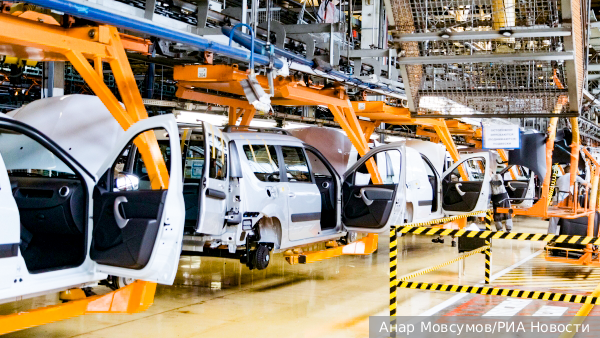
Russian car production has increased in first 8 months of 2023
By Rhod Mackenzie
According to the Russian Federal State Statistics Service (Rosstat), the production of passenger cars in Russia in August 2023 doubled compared to August 2022. The figure was 49.6 thousand units. At the same time, in comparison with July 2023, car production increased by 20.7%. As stated in the figures, a total of 294 thousand passenger cars were produced in the first eight months of this year. This is 9.6% less than a year earlier.
Other segments of the domestic car market have also showed positive dynamics. Thus, the production of trucks in August increased by 19.8% compared to August 2022 and reached 13.3 thousand, and compared to July 2023 - by 7.3%. In just eight months of 2023, 101 thousand trucks were produced, which is 10% more than in the same period of 2022.
In August 2023, the production of buses weighing more than 5 tonnes increased by 12.5% to 1.2 thousand compared to August last year, and by 23.3% compared to July this year. In January-August this year, 8.4 thousand of these buses were produced, which is 7.7% more than last year. The production of buses under 5 tonnes increased by 86.3% in August - to 2 thousand units. (+19.2% up to July 2023). In just eight months of this year, 13.1 thousand buses of this category were produced, which is 76.9% more than in January - August 2022.
In 2022 some of the indicators of industrial production in Russia fell, and this particularly affected the passenger car industry, recalls political scientist and head of the Influence Group Nikita Dontsov. Therefore, the growth now looks quite significant, but this is largely the effect of the low base of 2022.
However, Stanislav Naumov, the Deputy Chairman of the State Duma Committee on Economic Policy, said in an interview that it is obvious that the passenger car market is changing. "I don't see much point in changing anything about the import of familiar foreign cars, bring them and let them bring them. But of course we need to think about what and how to replace the assembly capacities that were created within the framework of the Ministry of Industry and Energy's "Investment instead of Imports" programme in 2005. There is no particular marketing sense in throwing consciousness back into the past and rebranding everything as "Muscovite", he believes.
Stanislav Naumov believes that it is much more interesting to remember the experience of creating Yo-Mobile. "It was a good project, such developments could be encouraged, I'm sure they haven't gone anywhere. The Chinese car industry is a reality that has been given to us in sensations. In any case, it is necessary to maintain a balance between importing finished machines and localising at least large-scale assembly in regions where there are ready-made facilities and skilled labour resources. But I would concentrate on projects where the products of our metallurgists will be in demand. You need your own platform, your own volumes of components. MPs should definitely drive such cars," concludes the State Duma deputy.
Consumption of domestic automotive products will increase
Ilya Silnitsky, CEO of Stekbike, notes that there are several common factors that can be taken into account when comparing Russian and Chinese cars that have come to our market. Firstly, he explains, Russian carmakers offer more affordable prices, which can be attractive to buyers on a limited budget. Secondly, Russian cars can offer good technical characteristics, especially in the SUV and truck segments.
In the past, Russian cars had a reputation for being unreliable, and during the years of stagnation, the position of the Russian automotive industry in general deteriorated significantly. In many ways, the analyst is sure, this was due to the targeted promotion of European, American and Japanese cars on the Russian market as high quality and durable - as opposed to Russian cars with a different reputation.
In recent years, many manufacturers have been actively working to improve the quality of their cars and regain the reputation lost during the years of stagnation in the Russian car market: new models are being developed, new production facilities are being built. Attempts are also being made to revive classic Soviet brands, such as Moskvich and Volga. It is quite possible, says Ilya Silnitsky, that in the coming years we will see an increase in the consumption of domestic automotive products.
However, the expert admits that Chinese cars have several advantages: they have a more modern design and more functions, which often makes them more attractive to buyers. There are also many more of them produced; the Chinese simply win in sheer numbers. In addition, Chinese cars are produced in Russian car factories, among others.
"In general," says Ilya Silnitsky, "the competition between Russian and Chinese cars depends on the specific model and the market segment in which they are presented, but Chinese models are often of higher quality, Chinese manufacturers offer a wider range and good support. Moreover, a mentality that has become second nature is not so easy to abandon. Many in Russia still believe that "everything made abroad is of better quality than what we make".
